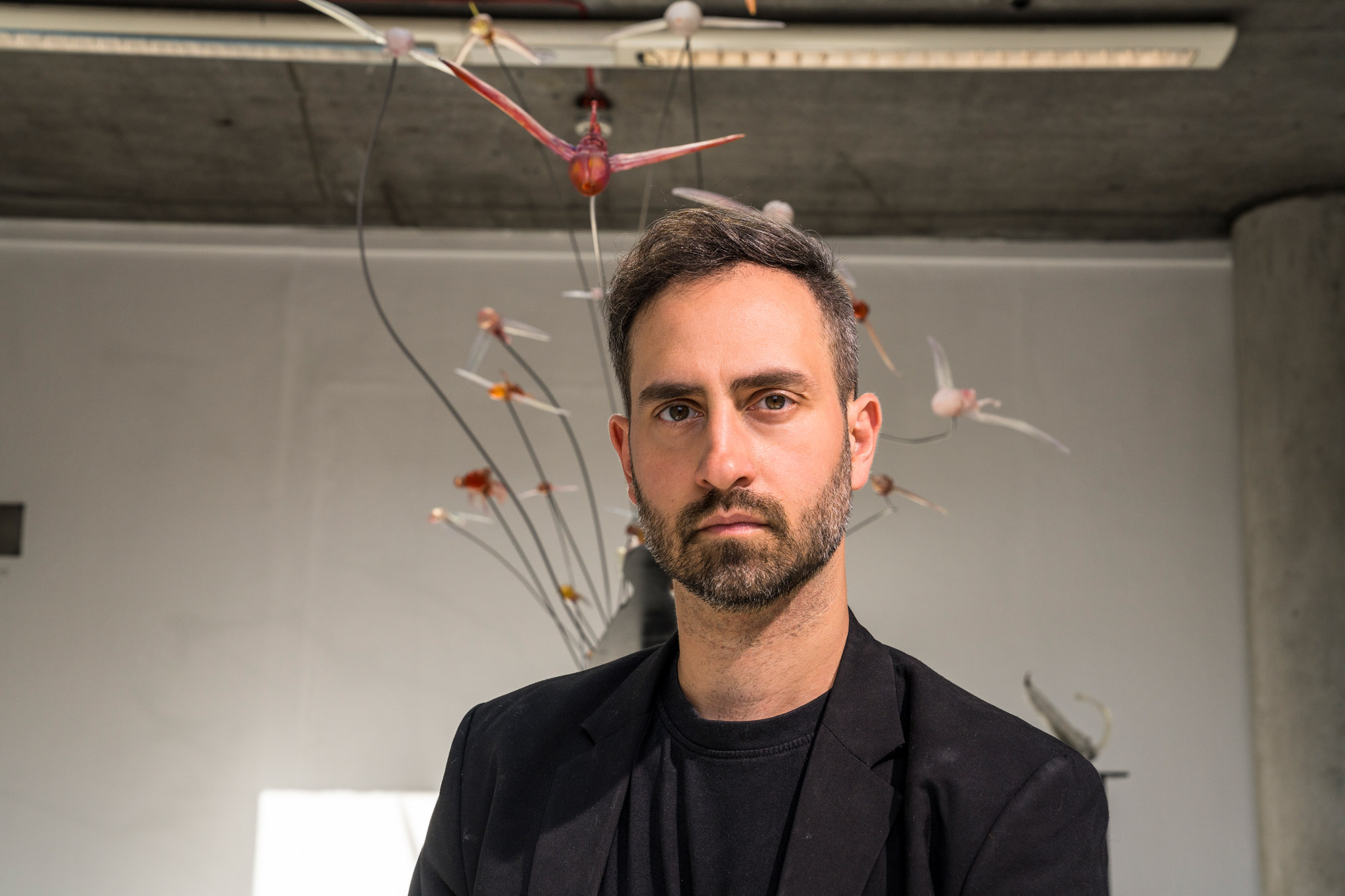
Vladimir Lalić (b. 1983, Belgrade, Serbia) is a London-based multidisciplinary artist whose practice spans sculpture, installation, and performance. Having presented over 35 solo exhibitions worldwide and received six awards for visual arts, including the prestigious Prix Paul-Louis Weiller from the French Academy, his work explores transformation, hybridity, and the fragile states between being and becoming. He completed his MFA at Goldsmiths, University of London, establishing a strong connection with the Lewisham Borough.
Tell us about yourself, your background, and your previous work?
I’m a multidisciplinary artist working across drawing, sculpture, installation, and performance. Alongside my studies in printmaking, I trained as an opera singer and performed internationally with my band, which shaped my sense of rhythm, emotion, and storytelling. I was born in the former Yugoslavia and grew up in Belgrade during turbulent times. Experiencing political and social collapse deeply influenced how I think about identity, resilience, and transformation. I came to London to study for my MFA at Goldsmiths, which shifted my practice more towards sculpture. I now live and work here. My works often depict imagined hybrid species, part animal and part human, to explore our shared instincts and the ways we evolve socially and emotionally. My art mixes humour and absurdity with something very personal and emotional. I have a website: www.vladimirlalic.com and Instagram: @vladimir.lalic.
How did you make it?
My sculptures are laser-cut from stainless steel sheets, then bent, welded, and hand-painted in enamel varnish. Each one is unique: some more insect-like, others more floral or abstract.
What message is the installation intended to send? How did you get the idea?
The installation is about migration, about the beauty and difficulty of movement. I wanted to show migration as something deeply natural and transformative. Movement, both physical and emotional, is what makes life possible. The idea came from a natural phenomenon called cvetanje Tise, the “blooming of the Tisza River,” which happens in Serbia near Novi Bečej, where my grandparents were born. Once a year, millions of mayflies rise from the river, live for just a few hours, and fill the sky with shimmering wings. It’s a fragile but powerful moment of renewal. When I was invited to create a piece for Echoes of Migration, that image came to mind immediately. I imagined creatures emerging from the lake, part insect, part flower, rising upward and transforming as they go. The title To Move, is to Bloom says everything: through movement, life renews itself. What is the installation meant to signify? It’s about transformation and belonging. Migration is often seen as loss or displacement, but I see it as growth, painful at times, but essential. The sculpture speaks of resilience, adaptation, and how diversity strengthens communities. Each of the fifteen creatures rises from the water, shedding its old form and unfolding into something more open and complex, almost like it’s blooming into a new identity. It’s a metaphor for migration, but also for personal change, for how we all evolve through movement, even internally.
How long will your artwork stay in the Lake?
It’s designed as a permanent public artwork, intended to remain in the park for decades. The sculptures are made of stainless steel, hand-painted with French enamel varnish to endure weather, sunlight, and water. The idea is for the piece to age gracefully, changing with light and seasons, becoming part of the park’s landscape and memory. It’s obviously a bit political.
Are you worried it will attract negative attention from people opposed to migrants? Any artwork that deals with migration inevitably touches on politics, even if that’s not the main intention. But this piece isn’t about division, it’s about empathy and understanding. It celebrates resilience and transformation. It’s meant to spark conversation, whether positive or critical, and that’s healthy. Art should provoke dialogue, not avoid it. We’re even planning to include a QR code on the plaque so visitors can leave their thoughts and reflections. Everyone is entitled to their own response. I’m not worried about disagreement; I welcome it as part of the work’s life.
This article has been updated.

